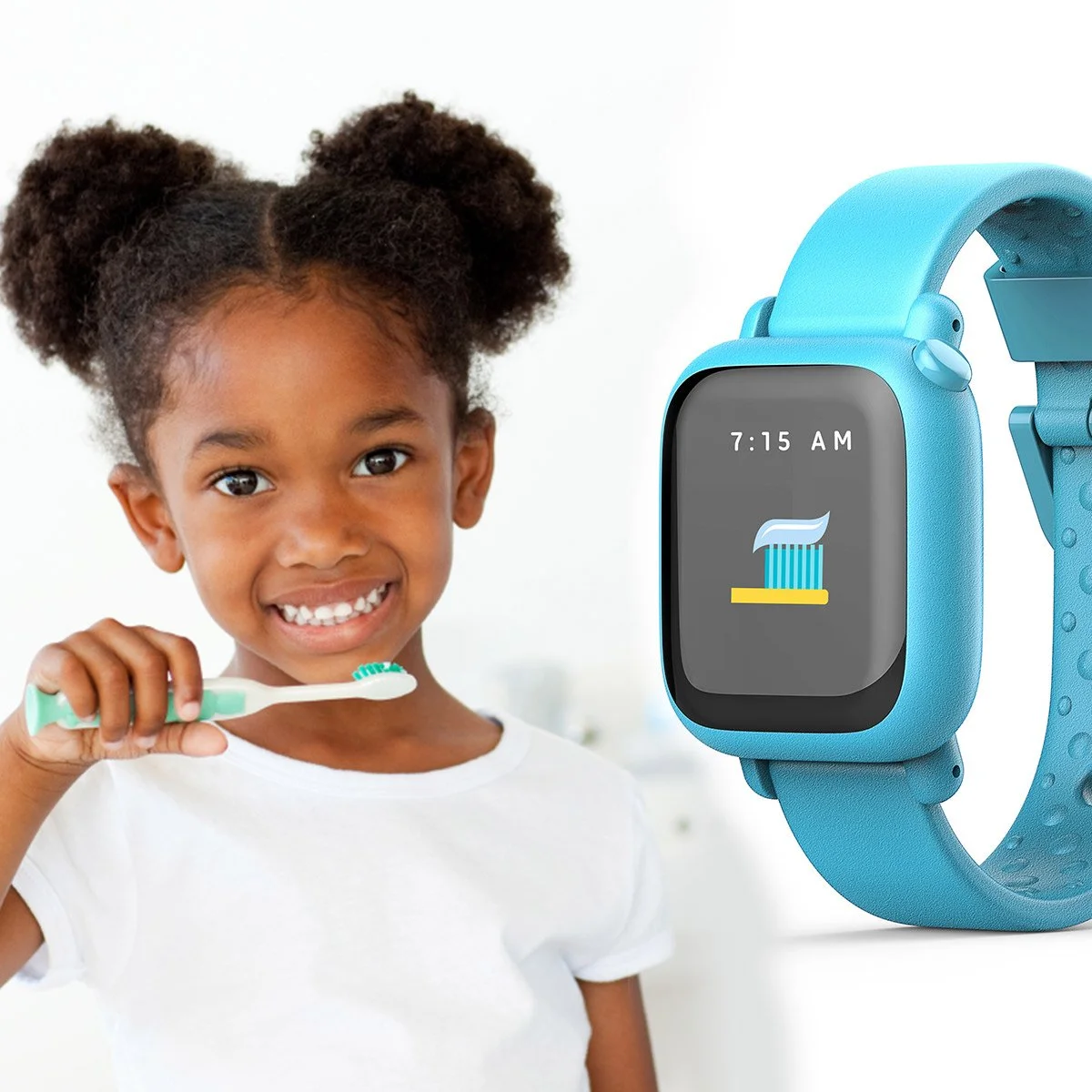
Octopus Watch for Children with Special Needs (Joy Family Tech):
Diary PILOT STUDY
Overview
My role was Lead Researcher, responsible for designing the 2-week intervention protocol, creating the healthy habits program structure, designing the survey instruments, and conducting the data analysis (affinity mapping and statistical comparisons).
The objective of this diary study was to see if there was a signal for the applicability of the Octopus Watch for a special needs population - children with Prader-Willi Syndrome. The results point towards strong potential for the Octopus Watch to help children with special needs. This research was completed in 2018.
The Octopus Watch, with its visual, icon-based scheduling and gradual time introduction, provides the predictability and concrete structure necessary to reduce transition-related anxiety.
Partnership:
TREND Community leverages social media to understand disease burden and its mission is to improve the quality of life for people living with rare and chronic diseases.
The CEO of TREND, Maria Picone, approached JOY Family Tech in the Summer of 2018 to propose a collaboration using JOY’s first wearable device, the Octopus Watch to assist families of children with PWS.
JOY and TREND partnered together in September 2018 for a 3 week initiative for children ages of 5-8 with a diagnosis of PWS. I collaborated with Maria Picone, the CEO of TREND and Blair Van Brundt, TREND’s Director of Community Development.
JOY donated watches for this initiative. By introducing the Octopus Watch wearable to children with PWS, gradually activating its features, and implementing tailored intervention strategies, our objective was to help children transition between activities, regulate their emotions, and alleviate anxiety.
Prader-Willi Syndrome (PWS) is a genetic condition that occurs in approximately 1 out of every 15,000 births.
Children with PWS experience high anxiety due to slow processing and difficulty predicting changes in their routine, leading to meltdowns and stress for the whole family.
PWS is recognized as the most common genetic cause of life-threatening childhood obesity. Children with PWS often experience cognitive and behavioral challenges including slow processing speed and high-levels of anxiety managing transitions.
CHALLENGE
Solution
The Methods
The JOY-TREND Community PWS Initiative is a pilot diary study testing the effectiveness of the Octopus Watch wearable for children with Prader-Willi Syndrome who exhibit behavioral and emotional difficulties related to routine and transitions.
Data collection relied on caregiver evaluations at baseline, during, and post-intervention through diary entries, quantitative survey data, and qualitative survey data.
Quantitative data included Likert ratings of statements related to child functioning before/after the study, and qualitative data included diary entries and short answer responses to questions related to child functioning.
Study Selection
34 participants completed the screener survey and 30 participants were invited to participate based on meeting eligibility criteria: the child with PWS was at least 5 years old at the time of the intervention, struggled with transitions, and could push a button on the watch.
Pre-Intervention Survey
The objective of the pre-intervention survey was to get a baseline understanding of each caregiver’s assessment of their child’s functioning with regard to changes in routine, focus on food, and meltdowns.
The top 4 challenges in child behavior in order of most to least common were:
1) changes in routine and transitions
2) anxiety around timing and predicting routine
3) being food focused
4) meltdowns
A kick-off webinar was hosted to help participants understand the objective of the study and to ask questions.
The Intervention
Caregivers participated in a 2-week intervention during which they noted their observations through:
diary entries,
short answer questions, and
responses to Likert items, and
completed a post-intervention survey.
The first week was spent getting the child used to responding to the Octopus Watch by gradually introducing events linked to time. Caregivers were encouraged to start with a light schedule.
Caregivers were asked to define 3 goals prior to the intervention. Goals ranged from increasing the efficiency of morning or evening routines, helping their child follow routines, instilling good habits, and regulating emotions.
The second week was spent optionally adding intervention methods or continuing to use the Watch as usual.
The Measures
Once pre-intervention data was collected, the intervention goals were defined:
Decrease tantrums and meltdowns
Decrease perseverative behaviors
Increase cooperation
Increase effective transitions
The intervention’s success was measured by parental satisfaction reports, and difference scores in pre and post-intervention surveys.
Study Design
The outcome of the initiative was overall highly successful and it can be said with confidence that the Octopus Watch has strong potential for children with special needs.
78% of the sample said they would continue using the Octopus Watch.
I created an affinity map to look at the change trends participants noticed in their children during the intervention.
The highest changes were seen in reduced anxiety, helping children complete tasks, and helping morning routines run more smoothly.
The greatest improvement was seen in the amounts of meltdowns in the last week of the intervention.
A meltdown was defined as “a reaction to something and usually beyond a child's control and a meltdown isn't likely to stop when a child gets what he wants”. A tantrum was defined as “a child can often stop a tantrum if he gets what he wants or if he's rewarded for using a more appropriate behavior”.
Overall, about 50% of participants saw an improvement in the amount of meltdowns and tantrums.
Caregivers were most satisfied with the child’s progress in the area of transitioning between activities with general agreement (strongly agree or agree) for 16 out of 17 parents.
Recommendation and next steps
The proposed next step was to conduct a controlled pilot study specifically within the ASD community to validate efficacy before launching a full-scale market entry campaign.

